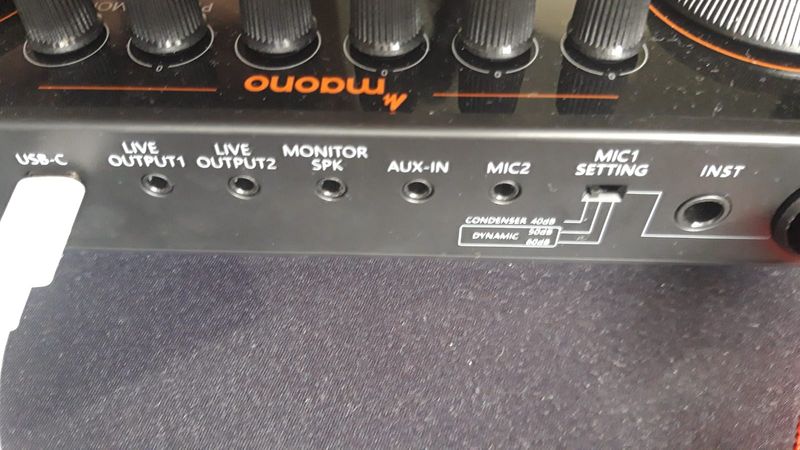Alright, I just unpacked this all-in-one podcast production studio bundle and started recording. Wow, they did an excellent job. All the settings were already optimized, but let’s not spoil the surprise!
In today’s review, I will discuss the Maonocaster E2 Integrated Audio Production Studio Bundle, which includes the podcast mixer Maonocaster E2 and the PM500 microphone.
Let’s get started!
First, the setup took a few minutes simply because I didn’t consult the manual in the box.
Putting it all together is actually quite simple. There’s no need for a screwdriver or any tools. It was operational within a few minutes. You don’t need to install software, as you have full control over the sound through the Maonocaster E2.
There are a few essential considerations to keep in mind. I have the PM500 in my kit, but generally, if you choose to connect any other microphone, ensure you know what you are plugging in beforehand.
You can select from various settings on the back of the E2. The PM500 (the microphone included in my kit) is a condenser mic, so ensure that you choose the condenser mic option on the panel. Since my condenser mic sensitivity is higher than -40 dB, I chose the 40dB setting.
Again, if you choose to go with a different option, just ensure you know the type of microphone you have beforehand. There are two additional settings: 50 dB and 60 dB. The 50 dB setting is suitable for microphones such as the Samson Q2U/HD300T, while the 60 dB setting is intended for microphones like the SM7B/SM58/MV7.
Table of Contents
First Impressions
My initial impression when I turned it on:
After a few minutes of experimenting, I checked the manual, and bam… all I needed to do was press a 48V button, and voila. The two buttons in the bottom left corner are faders that you can use to quickly mute or release mic sound.
Testing & Features
I’ve set it up and running, and now it’s time to test some features.
There are several features you can experiment with. Naturally, the most intriguing one is pitch. You can alternate between a deep, barrel-like voice and a high, squirrel-like pitch. Unsurprisingly, you can use this control to add the bassiness your voice requires.
Additionally, there are highs and lows that you can manipulate, along with a cool simulator (LED screen) that shows how well you adjusted them. Aim for the orange – it’s the sweetest spot!
I appreciate that you can connect your instrument, if you have one, to E2 and play along with it.

There are slots for two microphones: my PM500 and another microphone, which costs $50 but sounds significantly better with the appropriate E2 settings.
Of course, on E2, you can connect your headphones or speakers to live check the sound, test it, and adjust it to your needs. For streamers like me, there’s a really cool feature available – Bluetooth.
You can connect E2 to your Bluetooth device, such as a mobile device, and play music through it. This background music, which is set to an ideal level by default, creates a relaxed and chill atmosphere.
There is one thing that bothered me, and I believe they could have done better.
For instance, although the battery of a fully charged E2 can last up to 8 hours, it would be beneficial if the E2 charged while connected to the PC. Therefore, I had to use one of my phone chargers to charge it and the charger included in the kit to connect to the PC. The battery capacity is 2000mAh, indicating that there is room for improvement.
That’s the only aspect that I believe could have been improved.
The positive aspect is that it takes approximately 3 hours for the battery to charge completely.
On the right side of E2, we have a few remaining buttons: presents, side chain, music only, dry wet, loop back, and denoise.
Denoise will be automatically activated, and it’s a great feature that eliminates all background noise if you haven’t already configured it in your streaming software. As a result, you’ll enjoy free, distortion-free, warm sound.
You can activate dry mode, which will bypass all audio processing. This means you will receive a pure microphone signal.
